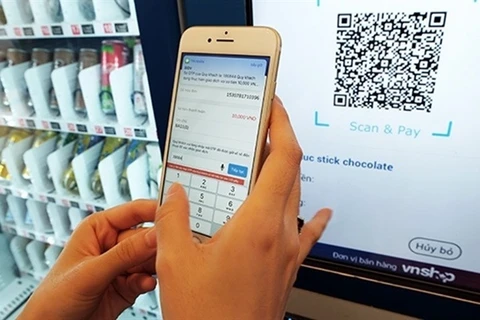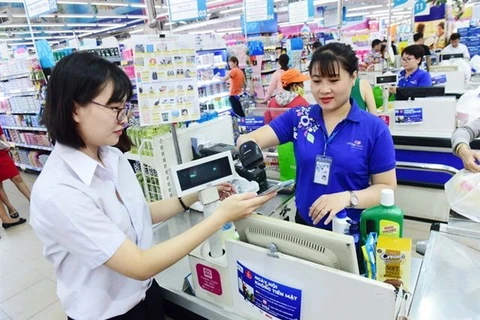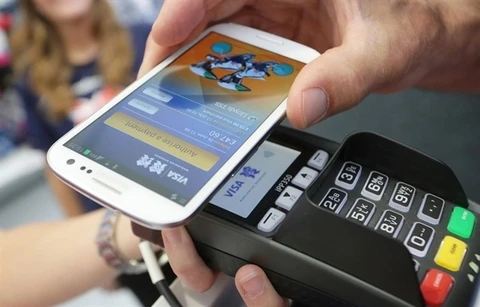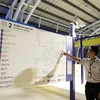 A MoMo e-wallet user pays a bill at the University Medical Centre in HCM City. (Photo courtesy of the hospital)
A MoMo e-wallet user pays a bill at the University Medical Centre in HCM City. (Photo courtesy of the hospital) HCM City (VNS/VNA) - The shift towards electronic payment is now an established trend with half of Ho Chi Minh City’s public hospitals embracing it, health authorities have said.
The number is expected to increase in the next few years as part of the healthcare sector’s efforts to improve hospital management and patients’ satisfaction, they said.
People can easily make an appointment for check-ups and treatment and pay hospital bills from their mobile phones instead of visiting the hospital and standing in long queues from very early in the morning.
Bui Thi Ngo, 62, from Tan Binh District, an inpatient at Cho Ray Hospital, said she regularly has check-ups and treatment at the hospital’s urology department.
“It is a little confusing since it was the first time I had to use a debit card to pay my medical bills.”
She was shown how to use the card and it took around 10 minutes to make the payment, she said.
Next time she would not carry a lot of money like she used to when visiting the hospital, she said.
The card is integrated with patients’ personal information and medical history.
It can be used for registering for diagnosis without having to furnish other papers such as health insurance cards and medical reports.
Nguyen Tri Thuc, Director of the Cho Ray Hospital, said that as a major general hospital in the south it provides diagnosis and treatment to nearly 10,000 patients a day.
The adoption of the electronic payment system in May helped reduce administrative costs, patients’ waiting time and pickpocketing, a common problem at major hospitals, he said.
It is convenient for follow-up examinations and eliminating touts at the hospital, another long-standing problem at many hospitals, he said.
The University Medical Centre in HCM City, one of the pioneers of electronic payments, began using the technology in 2016.
It has various cashless payment methods now such as internet banking and cards.
It has tied up with 23 banks and e-wallets to offer QR Code payment services.
Dang Anh Long, head of the hospital’s finance and accounting department, said cashless payments, an inevitable trend, would help reduce costs associated with handling cash.
It also benefits patients in terms of safety since they could pay the bills with their mobile phones and do not have to carry around cash, according to Long.
Noncash payment now accounts for 37 percent of payment of medical bills at the hospital.
The figure is expected to rise to 40 percent this year and 45 percent in the following years.
The entrenched habit of using cash for routine daily purchases is a major obstacle to adopting cashless payment, according to bank officials.
Investment in information technology infrastructure at hospitals is needed for the adoption of electronic payment systems at hospitals.
Tran Van Duc, head of the hospital’s IT department, said it had to install IT infrastructure to the highest level mandated by the Ministry of Health's Information Technology Department and its own tailored software, making it easier to connect with banks and payment service providers.
Top-notch IT infrastructure meant personal information would be protected from cyberattacks, he said.
Nguyen Thanh Tung, deputy general director of Vietcombank, said electronic payment was a solution to streamline the system at hospitals.
Deputy Minister of Health Nguyen Truong Son said as adoption of information and communication technology increased in healthcare, electronic payment systems were a key technology that every hospital should exploit.
"Cashless payment is the Government’s preferred option for improving transparency in all examination and treatment processes," he said.
Hospitals with financial autonomy could decide how much to invest in ICT and electronic payment systems, he said.
The city People’s Committee has ordered departments to put more efforts into promoting e-payment for public services, one of the priorities in creating a smart city./.
VNA
























